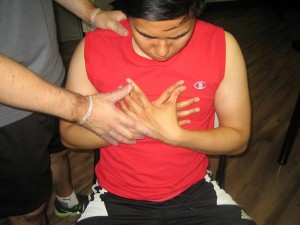Wheat allergy is a reaction to food that contains wheat. An allergic reaction can be caused by eating and inhaling wheat flour which are found in beer, soy sauce and ketchup. Wheat allergy produces an antibody that causes an allergy to proteins that is found in wheat.
Symptoms of wheat allergy
Symptoms of wheat allergy occur within minutes to hours after eating foods that contains wheat.

- Nasal congestion
- Diarrhea, cramps, nausea and vomiting
- Headache
- Swelling, itchiness or irritation in the mouth and throat
- Hives, itchy rash and also swelling of the skin
- Anaphylaxis
- Difficulty breathing or shortness of breath
- Itchy and watery eyes
It is important to note that children with wheat allergy outgrow this condition by the time they reach ages 3 to 5 years old.
Wheat allergy can also cause anaphylaxis, which can manifest with the following symptoms:
- Rapid heartbeat
- Severe difficulty in breathing, tightness and chest pain
- The person feels dizzy or may faint
- The person experiences swelling or tightness of the throat, and the person has trouble swallowing.
- The color of the skin is pale and blue
Causes
Exposure to a particular protein in wheat can cause the immune system of the person to start an allergic response. The wheat proteins can be found in breads; some cosmetics, products used for bathing, and also in play dough. Wheat can also be found in beers, soy sauce, hydrolyzed vegetable protein, and some meat products like hot dogs or cold cuts, ice creams, natural flavorings, starches, vegetable gums, hard candies, jelly beans and licorice.
A person who has allergy on wheat can be also allergic to barley, oats and rye. A person can develop allergies on wheat if the person performs some exercises a few hours after eating foods that contains wheat. Exercise that gives changes in the body either activates an allergic reaction or making the response of the immune system worse will eventually result to anaphylaxis.
Treatment and home remedies
- Make sure that everyone knows that the child or person has allergy on wheat, and knows about the signs and symptoms of wheat exposure. By enrolling in a first aid class, you are prepared to handle an allergic reaction.
- The person should wear a medical identification bracelet that can describe the allergy and can help a person if he/she experiences anaphylaxis.
- Reading the labels of food, making sure that the food does not contain wheat that the person is allergic to.
- Shop for gluten-free foods in stores and supermarkets which are safe to eat by people who are allergic to wheat.
- Follow recipes of wheat-free cookbooks so that the person can enjoy eating the food that he/she cooked.
- If a person dines out, just order simple dishes by avoiding foods that contains sources of wheat proteins like sauces, some deep-fried food and those that might contain wheat.